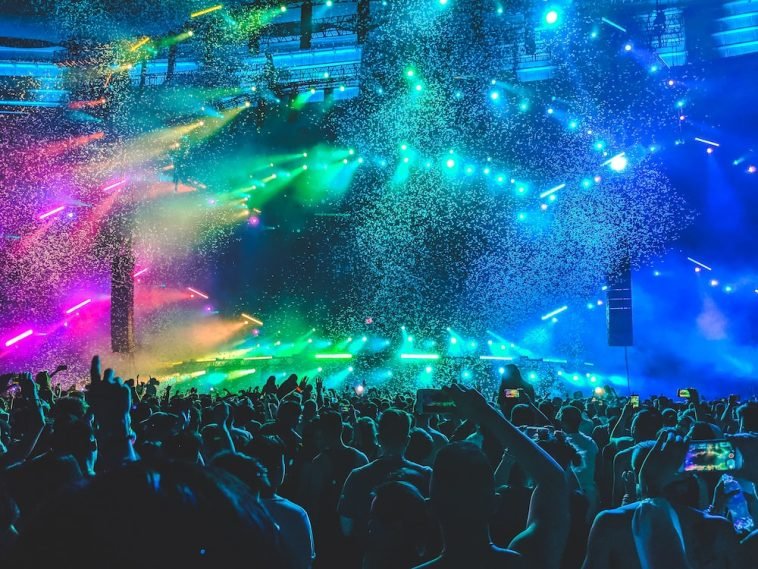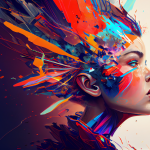Introduction.
If you’ve ever wondered how to make an AI create art, you’re not alone. Something is fascinating about the idea of teaching a machine to “think” creatively.
With AI art generators becoming more popular, many people are exploring ways to train their models to produce unique pieces of artwork. It’s not just for tech experts—anyone with a bit of curiosity and patience can dive in.
In this article, I’ll walk you through how to train your very own AI art generator. It’s a step-by-step guide that makes the process simple, even if you don’t have a background in programming.
Why Train Your Own AI Art Generator?
Before I jump into the how-to, let’s take a moment to discuss why this topic even matters. With AI quickly becoming a part of our daily lives, it’s changing the way we approach creativity.
Platforms like DALL-E, Stable Diffusion, and MidJourney have been making waves by turning text prompts into impressive artwork.
But what if you want something even more personal? Something that reflects your unique style? That’s where training your own AI art generator comes into play.
By training your own AI, you can create a model that knows your preferences. Want it to focus on abstract designs, nature-inspired patterns, or even surrealism?
It can learn that. Plus, training your own AI gives you full control over the output. You’ll be able to fine-tune it, so it generates art that feels like “your own.”
And while it might sound complicated, it doesn’t have to be. You can train a basic AI art generator without needing a PhD in computer science. Many tools and platforms make this accessible, so let’s break it down.
How Do I Train My Own AI Art Generator?
Step 1: Understanding the Basics of AI Art
Before jumping into training an AI, it’s important to understand how AI art generation works. At a high level, AI art generators use a type of machine learning called neural networks.
These networks are trained on massive datasets of images, learning patterns, colours, textures, and styles. They then use that knowledge to create new images based on the prompts you give them.
There are a few different approaches to training an AI art generator. The most common methods are using models like:
- Generative Adversarial Networks (GANs): GANs consist of two networks—a generator and a discriminator—that work together to improve the art over time. The generator creates images, while the discriminator evaluates them. The goal is for the generator to create art that the discriminator can’t distinguish from real artwork.
- Style Transfer Models: These models apply the style of one image to another, effectively blending the content of one image with the aesthetic of another. It’s a simple way to create artwork that mimics the style of famous artists or specific visual themes.
- Text-to-Image Models: These models, like OpenAI’s DALL-E, generate images based on textual descriptions. For example, you can input a phrase like “a sunset over a mountain range” and the model will create an image of that scene.
Understanding these basic concepts will give you a foundation for training your AI model.
Step 2: Choose Your Training Method
Now, it’s time to decide which method works best for you. Each has its pros and cons, so let’s look at a few options:
Option 1: Using Pre-trained Models
If you’re looking for something quick and relatively easy, you can start with a pre-trained model. Many platforms allow you to use a model that’s already been trained on a large dataset.
All you need to do is fine-tune it using your data or preferences. Some popular platforms for this include:
- RunwayML: Runway allows you to use pre-trained models, and they also give you tools to tweak the models based on your needs. It’s great for beginners.
- Artbreeder: This platform lets you combine different art styles and tweak images to create your own. It’s a fun, easy way to start making AI-generated art without worrying too much about the technical side.
Option 2: Training from Scratch
If you want full control, you can train your model from scratch. This is more complex, but it gives you the most flexibility. Here’s what you’ll need:
- Data: You’ll need a dataset of images to train your AI. You can either find public datasets or curate your own by gathering images that fit the style or subject matter you want the AI to learn. Make sure to check copyright rules to avoid legal issues.
- Hardware: Training AI models require a good amount of computing power. Many people use cloud-based services like Google Colab or AWS to rent powerful machines for training. These services allow you to avoid investing in expensive hardware.
- Frameworks: To train the model, you’ll need a framework like TensorFlow or PyTorch. These libraries offer pre-built functions that make it easier to train machine learning models.
Training from scratch is a deeper dive into the technical side, so I recommend it for people who already have some coding experience. If you’re just starting, option one might be better.
Step 3: Collect and Prepare Your Data
Whether you’re using pre-trained models or starting from scratch, the quality of the data you use will impact the quality of the art your AI creates. You’ll need to gather images that are closely related to the art you want the AI to generate.
For example, if you want to create nature-based designs, you should collect photos of landscapes, plants, and animals.
Once you have the images, you’ll need to format them correctly. AI models often require images to be resized to a specific resolution or colour format. This part can be a little tedious, but the model needs to learn effectively.
Step 4: Train Your Model
At this point, the fun begins! If you’re using a pre-trained model, you can start fine-tuning it by feeding in your data.
The model will adapt to your data over time, learning your style, preferences, and what kind of art you want to create.
If you’re training from scratch, you’ll need to input your dataset into the AI model, and it will start the learning process.
Depending on your hardware and dataset size, training can take anywhere from a few hours to several days.
Step 5: Evaluate and Fine-Tune
Once your model has started creating art, it’s time to evaluate the results. Are the images what you had in mind?
Are there any patterns or styles you’d like to emphasize more? This is where you’ll spend a lot of time making adjustments.
You can fine-tune your model by adjusting the learning rate, changing the number of layers in the network, or tweaking other parameters. Don’t be afraid to experiment and make changes until you get the results you want.
FAQs
Do I need coding skills to train an AI art generator?
It helps to have some basic understanding of programming, but some many tools and platforms simplify the process for beginners.
How long does it take to train an AI art generator?
The time it takes can vary depending on the complexity of your model and the amount of data you’re using. It could take anywhere from a few hours to a few days.
Do I need expensive hardware to train an AI?
Not necessarily. You can use cloud-based services like Google Colab or AWS to access powerful computing resources without needing to buy expensive hardware.
What if I don’t want to train an AI from scratch?
Some pre-trained models and platforms allow you to create art by fine-tuning an existing model. These are great for beginners or those who want quicker results.
Further Resources
- RunwayML: A creative platform for AI art and machine learning.
- Google Colab: A cloud service for running Python notebooks and training machine learning models.
- TensorFlow: A popular machine learning framework that’s widely used in AI art generation.
Conclusion
Training your own AI art generator is a rewarding and fun project, whether you’re doing it as a hobby or to push the boundaries of creative expression.
It may seem daunting at first, but with the right tools and patience, you can create something truly unique.
Are you ready to dive into the world of AI-generated art and explore what your model can create?





GIPHY App Key not set. Please check settings